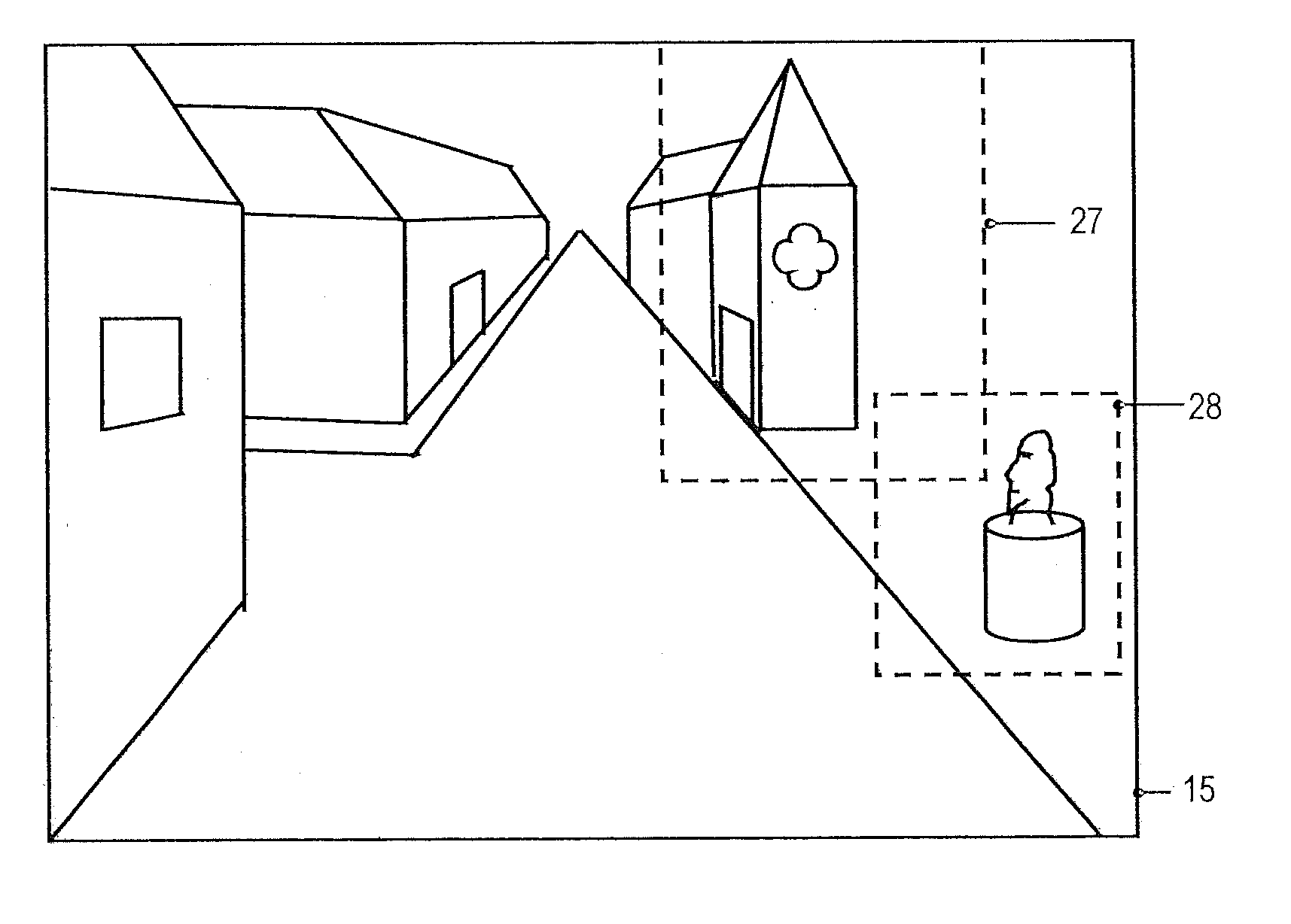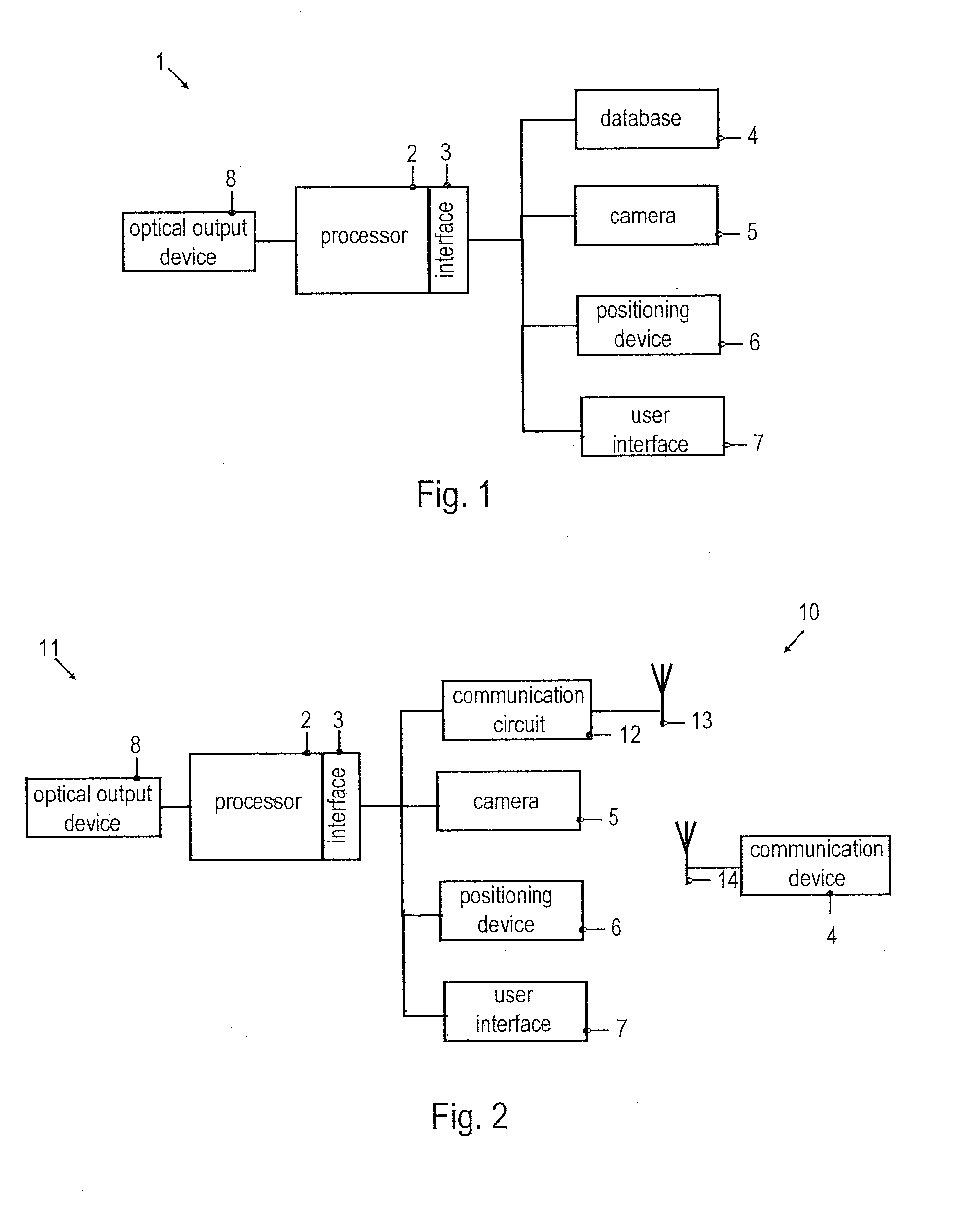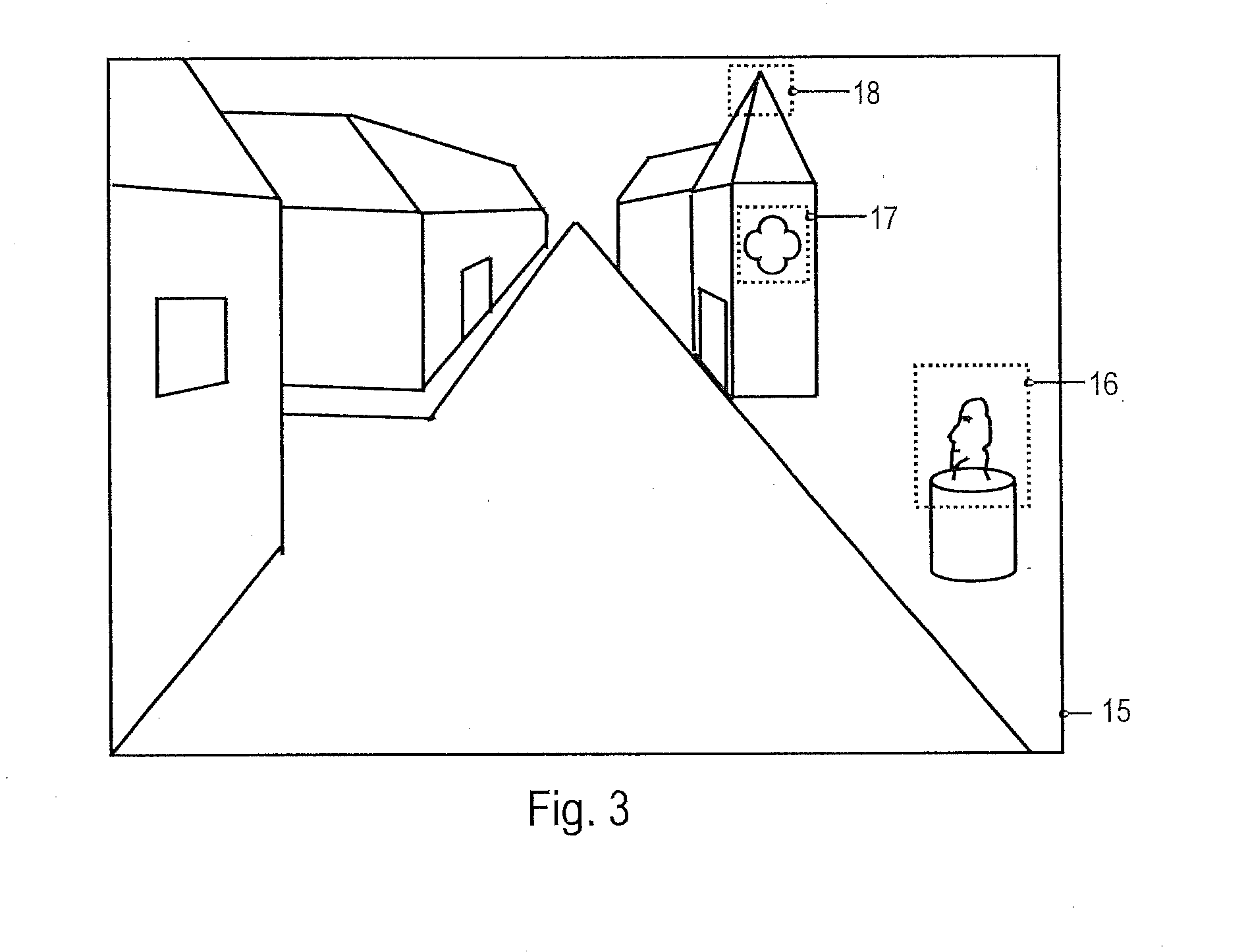Vision system and method of analyzing an image
a vision system and image technology, applied in the field of vision systems, can solve the problems of reducing affecting the accuracy of object recognition, so as to achieve the effect of enhancing the robustness and speed of object recognition
- Summary
- Abstract
- Description
- Claims
- Application Information
AI Technical Summary
Benefits of technology
Problems solved by technology
Method used
Image
Examples
Embodiment Construction
[0057]Embodiments of the invention will be described with reference to the drawings. While some embodiments will be described in the context of vehicle vision systems, the systems and devices of various embodiments may be employed in a wide variety of applications. The features of embodiments may be combined with each other unless specifically stated otherwise.
[0058]According to embodiments, geo-referenced feature descriptors, which may be combined to form geo-referenced feature vectors, are utilized for object recognition in an automated vision system. As used herein, the term “geo-referenced” refers to a quantity that is associated with at least a pair of coordinates specifying the lateral position of an object associated with the quantity. For example, a geo-referenced feature descriptor is a feature descriptor that is associated with at least a 2-tuple of coordinates, which represent a position or position estimate of the object represented by the geo-referenced feature descript...
PUM
 Login to View More
Login to View More Abstract
Description
Claims
Application Information
 Login to View More
Login to View More - R&D
- Intellectual Property
- Life Sciences
- Materials
- Tech Scout
- Unparalleled Data Quality
- Higher Quality Content
- 60% Fewer Hallucinations
Browse by: Latest US Patents, China's latest patents, Technical Efficacy Thesaurus, Application Domain, Technology Topic, Popular Technical Reports.
© 2025 PatSnap. All rights reserved.Legal|Privacy policy|Modern Slavery Act Transparency Statement|Sitemap|About US| Contact US: help@patsnap.com



